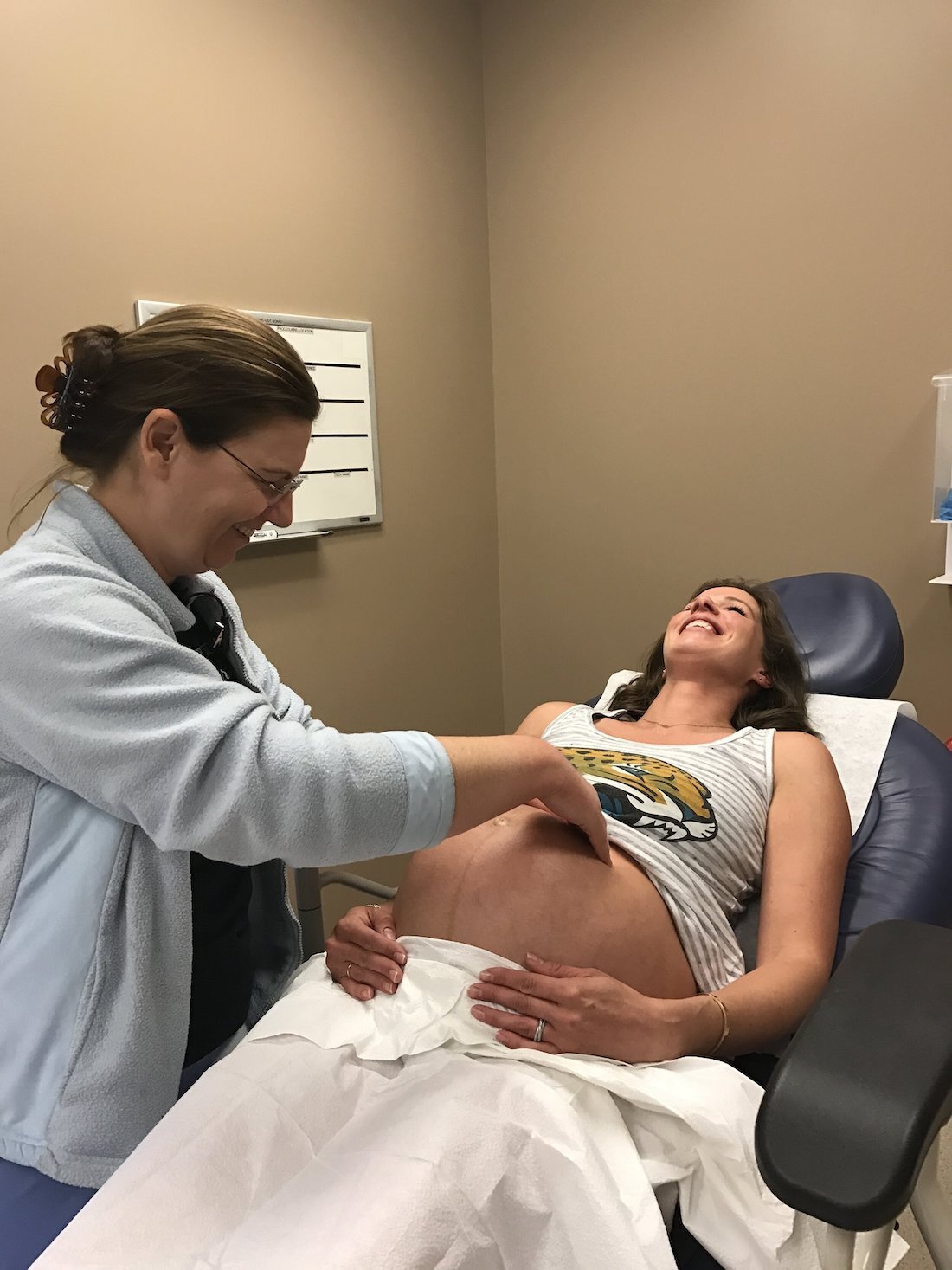How to open the pelvis for labor and birth
This one’s for the Birth Doulas
But really good for expecting parents to know, too!
One of the first things we were taught in Midwifery School (back in the dark ages LOL) was "Put your hands on the belly first, THEN do your internal exam"... I no longer work as a CNM but as a doula, knowing WHERE the baby is, is important to me. So, I appreciate it when a care provider or labor nurse is adept at doing Leopold’s Maneuver.
Carol Rademeyer, CNM, ARNP is doing Leopold’s Manuever to determine the position of my client’s baby. (Isn’t that the sweetest belly? and baby was born a few hours later!!)
What’s the big deal?
As a doula, I always say that I am more interested in the position and the station of the baby than I am in my client’s cervical dilation. Why? Because, those two pieces of information tell me what I need to know in order to help a labor progress and determines the way I position the body of my client. If the baby is still high in the pelvis, I pull out my "help baby engage" tips. If baby is below zero, I pull out my "help baby to perineum" tips.
Take a look at this image below about Fetal Position. It gives you an idea of what the various positions are. Then watch the video (below) about Position. If you are a birth worker, you might want to grab a pelvis (and you should have one!) and a baby doll and practice with the video. Our instructors at 4TFM really like the one WITH the femurs attached and you’ll see why soon. (By the way, that is an amazon affiliate link. If you use that link, it helps me to provide more education!)
FETAL POSITION. See the video below for further explanation of positioning.
Position—>then Station—> THEN dilation.
Then you'll know what to do next.
When we talk about the Fetal Station, we mean “where is the presenting part” (vertex/head or breech) of the baby in the pelvis. The pelvis has two little projections called Ischial Spines that jut inward to the opening just a bit. We call that spot “ZERO STATION”. Anytime the baby is ABOVE ZERO, we call it MINUS 1,2,3… Anytime the baby is BELOW ZERO, we call that PLUS 1,2,3…
It can be a bit confusing so an easy way to remember if it is plus or minus is to say that anything BELOW ZERO is all positive… As in, “Baby is coming soon! It’s all POSITIVE from here on OUT!”
FETAL STATION
Once you know about baby’s position and baby’s station, you will know how to position your client.
Did you decide if you want to open the inlet or the outlet of the pelvis? In early labor, you open the inlet. In later labor, you open the outlet.
Remember this:
Feet IN opens the INLET,
Feet OUT opens the OUTLET
Feet IN with the knees out, opens the inlet by flaring out the ilium (hips of the pelvis). To open the Inlet of the pelvis we use Sacral Counternutation - the top of the sacrum tips back, the coccyx tips under, and the ilium abduct (Abduction - move away from the midline of the body). This makes the upper bowl of the pelvis open wider and lets baby move into the pelvis. This is called Engagement.
To open the Inlet of the pelvis
To open the Outlet of the pelvis we use Sacral Nutation - the top of the sacrum tips forward, the coccyx tips back, and ilium adduct (Adduction- move towards the midline of the body). This makes the lower part of the pelvis open wider and helps baby have room to move to the perineum and birth.
To open the outlet of the pelvis
If you really want to Geek Out - watch this YouTube video about Counternutation and Nutation.
By the way: A tip to remember which is “counter nutation” and which is “nutation” is that they go in alphabetical order just like “inlet” and “outlet”. So to open the inlet, use sacral counter nutation. To open the outlet, use sacral nutation.
This is true for
unmedicated or medicated birth.
Even with an epidural, this mom moved to hands and knees. Here you see the OUTLET opening position of her feet
Did this help you gain a better understanding of the Position, Station and the Inlet and the outlet of the pelvis? These are things that our 4TFM instructors teach in Prep4Birth™.
If you are a birth or fitness professional and interested in becoming a Certified 4TFM Instructor, check out our instructor training zone. We offer ICEA and NASM contact hours for our certifications.
If you are a birth professional looking for more “tips of the trade”, check out our Labor Tools For Birth Pros course. You can earn ICEA contact hours and join our 4TFM trained Birth Pros.







